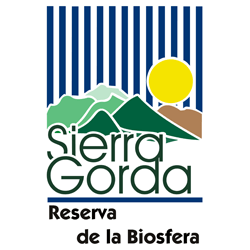by Roberto Pedraza Ruiz
Despite having a large population of nearly 100,000 people, distributed in 638 different communities, the Sierra Gorda has various well-conserved sites which shelter many species of wild flora and fauna classed as threatened and endemic. Since the official decree of the Biosphere Reserve, eleven core areas have been identified which together cover an area of 24,803 hectares.
This has helped to protect significant portions of all of the ecosystems present inside the polygon of the reserve, according to zoning regulated by the General Law of Ecological Balance and Environmental Protection for this type of Natural Protected Area. These areas are well preserved or little altered and are home to unique ecosystems, natural phenomena of special importance and species of flora and fauna in danger of extinction. Human activity is restricted to scientific investigation, preservation of its elements, environmental education, and activities to prevent and combat plagues and forest fires.
The smallest of the core areas is the Sotano del Barro, a naturally occurring sinkhole, which is the deepest in the world, measuring 410 meters from top to bottom. A geological marvel, it is home to the last colony of Green Macaws in the center of the country. They are a highly threatened species that nest in the walls of the sinkhole and were previously disturbed by the activities of cavers exploring the area.
To the North, situated in the canyons of the rivers Ayutla and St. Maria, are found five core zones that together cover an area of 13,675 hectares of low and medium forests with a gradient that varies from 300 to approximately 1000 meters above sea level. Many species of flora are found here, such as chacas, bow sticks, Lead tree (tepehuajes), oxites, Florida strangler fig (higuerón) and orchids. The fauna found here includes white-tailed deer, boar, armadillos and other small mammals such as, spotted pacas, other pacas and tayras. Types of felines include tiger cats, jaguarundis, pumas and jaguars. The presence of these felines along with birds such as Great Curassows, Mexican Red-headed Parrots and military macaws indicate the area is well conserved as these species are very sensitive to human disturbance.
Over the main body of the Eastern Sierra Madre, to the east of the reserve, you may find particularly valuable zones, such as “Cañada de las Avispas” and the “Joya del Hielo”, which are covered by coniferous, deciduous and cloud forests. They are in a good state of conservation with species such as magnolias, granadillos and guayamés. The Bearded Wood Partridge also makes its home here, which has lost the majority of its habitat and are a species exclusively found in Mexico. The south of the reserve is made up of 3270 hectares of lowland forest and along the banks of the Moctezuma river, there is an area of particular beauty, with stone forming the walls of a canyon, which protects an especially wild place. Finally, descending from the highest points of the Sierra, in Pinal de Amoles down to Misión de Bucareli there are the core areas of “Mazatiapán” and “Cerro Grande” which are rich in cacti and desert plants, making up part of the botanic jewel that begins in the Chihuahua desert.
The Sierra Gorda differs from other reserves because the majority of its core zones are on its peripheries. This is because they are unpopulated areas, which have been relatively under-used by local people and therefore preserved, due to their accidental topography. As a result, we can trust that they will remain intact, with all of their biological richness and capacity to provide environmental services that benefit local inhabitants as well as the neighboring areas.

